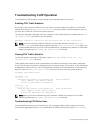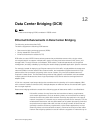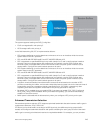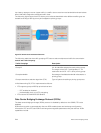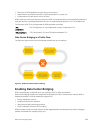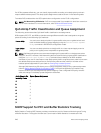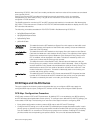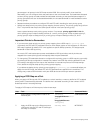
12
Data Center Bridging (DCB)
NOTE:
Data center bridging (DCB) is enabled in Z9500 switch.
Ethernet Enhancements in Data Center Bridging
The following section describes DCB.
The device supports the following DCB features:
• Data center bridging exchange protocol (DCBx)
• Priority-based flow control (PFC)
• Enhanced transmission selection (ETS)
DCB refers to a set of IEEE Ethernet enhancements that provide data centers with a single, robust,
converged network to support multiple traffic types, including local area network (LAN), server, and
storage traffic. Through network consolidation, DCB results in reduced operational cost, simplified
management, and easy scalability by avoiding the need to deploy separate application-specific networks.
For example, instead of deploying an Ethernet network for LAN traffic, include additional storage area
networks (SANs) to ensure lossless Fibre Channel traffic, and a separate InfiniBand network for high-
performance inter-processor computing within server clusters, only one DCB-enabled network is
required in a data center. The Dell Networking switches that support a unified fabric and consolidate
multiple network infrastructures use a single input/output (I/O) device called a converged network
adapter (CNA).
A CNA is a computer input/output device that combines the functionality of a host bus adapter (HBA)
with a network interface controller (NIC). Multiple adapters on different devices for several traffic types
are no longer required.
Data center bridging satisfies the needs of the following types of data center traffic in a unified fabric:
LAN traffic LAN traffic consists of many flows that are insensitive to latency requirements,
while certain applications, such as streaming video, are more sensitive to latency.
Ethernet functions as a best-effort network that may drop packets in the case of
network congestion. IP networks rely on transport protocols (for example, TCP) for
reliable data transmission with the associated cost of greater processing overhead
and performance impact LAN traffic consists of a large number of flows that are
generally insensitive to latency requirements, while certain applications, such as
streaming video, are more sensitive to latency. Ethernet functions as a best-effort
network that may drop packets in case of network congestion. IP networks rely on
Data Center Bridging (DCB)
241




